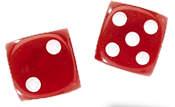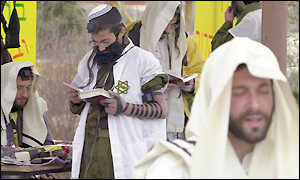Fearful Symmetry
I just Googled this phrase and found the following site, which turns out to be related to my previous entry on the Bead Game and the death of John P. Thompson.
Fearful Symmetry:
The Music Master’s Lecture,
by Daniel d’Quincy.
This in turn links to an excerpt from The Glass Bead Game that includes this passage:
“I suddenly realized that in the language, or at any rate in the spirit of the Glass Bead Game, everything actually was all-meaningful, that every symbol and combination of symbols led not hither and yon, not to single examples, experiments, and proofs, but into the center, the mystery and innermost heart of the world, into primal knowledge. Every transition from major to minor in a sonata, every transformation of a myth or a religious cult, every classical or artistic formulation was, I realized in that flashing moment, if seen with a truly meditative mind, nothing but a direct route into the interior of the cosmic mystery, where in the alternation between inhaling and exhaling, between heaven and earth, between Yin and Yang, holiness is forever being created.”
It is very easy to get dangerously confused about holiness, but here are some relevant quotes:
“You will have to allow me to digress a bit in order to bring ourselves to a sufficiently elevated perspective… I warn you, it will require an attitude of playfulness on your part. Our approach will aim more at sincerity than seriousness. The attitude I’m aiming at is best expressed, I suppose, in the playing of a unique game, known by its German name as Das Glasperlenspiel, and which we may translate as the Glass Bead Game.”
— Daniel d’Quincy, Fearful Symmetry
“7:11”
— God himself said this, at least according to the previous entry and to my Jan. 28 entry, State of the Communion.
“Seven is heaven.”
— See my web page Eight is a Gate.
“An excellent example of a ‘universal’ in the sense of Charles Williams, Jung, or Plato is Hexagram 11 in China’s 3,000-year-old classic, the I Ching:
 |
‘Heaven and earth unite:
the image of PEACE.’
(Wilhelm/Baynes translation,
Princeton University Press, 1967)”
|
— S. H. Cullinane, Plato, Pegasus, and the Evening Star
Thus we may associate the numbers 7 and 11 with the notions of heaven and peace; for a somewhat darker association of the time 7:11 with Kali as Time the Destroyer, see my last entry and also my previous entries
Fat Man and Dancing Girl (Feb. 18, 2003), and
Time and Eternity (Feb. 1, 2003).

















 “
“ 





















